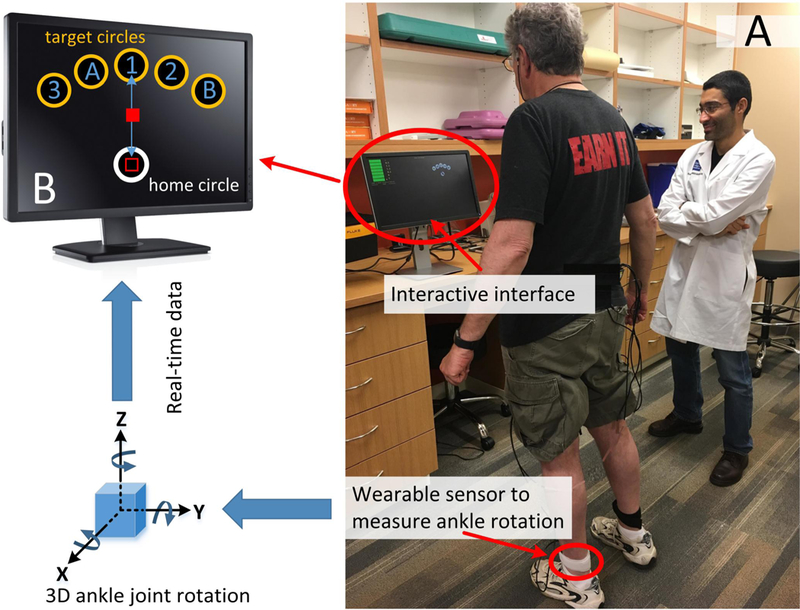Figure 1.

The iTMT included standing in front of a standard computer and performing a series of virtual trail-making tasks by rotating ankle joint (Fig. 1A). Subjects were allowed to hold a chair or table for support if needed. A shin-worn sensor enabled measuring 3D rotation of ankle 638 joint and mapped it into movement of a computer-cursor in real-time (sample frequency of100Hz). This allowed a smooth navigation of the computer-cursor by rotation of ankle joint. The iTMT reaching tasks include bringing the cursor back and forth to 5 targets indexed with numbers (1–3) and letters (A&B) in the sequential number-letter order (i.e. 1, A, 2, B, and 3, Fig. 1B). Audio and visual feedbacks were provided to assist accurate execution of the tasks in the correct order.
